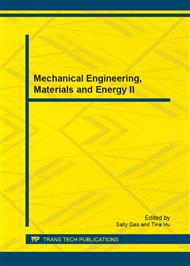p.112
p.116
p.121
p.127
p.134
p.141
p.146
p.151
p.155
Flow Control Research between ForCES Channels
Abstract:
In order to enhance the performance of ForCES network fully, and ensure the security and accuracy of communication between Control Elements (CEs) and Forwarding Elements (FEs), we designed Prediction-based Traffic Control and Configuration (PTCC) to reduce the likelihood, severity and duration of congestion. Through predicting the average reaching rate of the news package in the following time to control well the flow of every ForCES channel, and distribute available bandwidth for every ForCES channel according to news throughput reasonably and instantaneously. The experimental results validated the validity of this flow control mechanism.
Info:
Periodical:
Pages:
134-140
Citation:
Online since:
January 2013
Authors:
Keywords:
Price:
Сopyright:
© 2013 Trans Tech Publications Ltd. All Rights Reserved
Share:
Citation:


